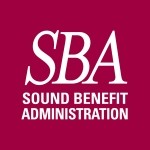Around our region, companies are struggling to keep and attract quality employees and are pulling their hair out over lost productivity due to congested roads. For businesses in a metro region, where public transportation is readily available and/or paid parking is a fact of life, a “Qualified Transportation Plan,” (QTP) also known as a Section 132 Transportation Plan or Transportation Fringe Benefit Program, may be a multi-faceted solution. If this program hasn’t been on your radar, you are probably not alone. But, in our growing metropolis, educating yourself could save companies and employees time and money.
Here’s a best-use-case scenario of how a transit plan benefits an employee:
- Janet drives her car every day to the Bainbridge Island ferry terminal. She pays $130 per month to park her car.
- She then rides the ferry to downtown Seattle, then catches a bus to her workplace. The cost of a ferry/bus Orca card is $180.00 per month.
- Total monthly transportation expense: $130 + $180 = $310/month
If her employer offers a QTP, she can pay for both expenses with pre-tax dollars. A lower-income employee would expect to save 25% in payroll taxes = $77.50 per month or $930 annually! And, even the employer benefits by not paying the 7.65% in payroll taxes, saving $23.72 per month or $284.58 annually! These savngs can add up when you consider the payroll tax savings across all employees. Perhr all of their employees.
What commuting expenses qualify under a QTP?
Most publicthe transportation, bus, train, ferry or vanpool expenses are eligible, as are paid parking expenses. Road tolls for bridges, tunnels and turnpikes, as well as expenses related to vehicle gas, repair or mileage are not eligible.s on the amount eligible for pre-tax purposes?
Yes. These monthly indexed maximum limits are set generally in October/November for the upcoming year (although they have been known to change mid-year on occasion). The limits apply separately to two categories: parking and transit.
While in the past, the transit account limit was significantly lower than the parking account, in 2016, the IRS got with the times and equalized them. The limits for 2017 are:
- $255 per month for parking, AND
- $255 per month for transit (bus, train, ferry or vanpool)
A company can choose to offer one or both benefits, potentially offering employees a pre-tax savings of $510/month ($255 + $255 = $510 maximum limit)!
How should a company determine if a QTP makes sense?
First consider the company’s location to determine if using public transportation to get to work or paying for parking is common among employees. An employee survey can help identify interest and potential savings prior to implementing the appropriate type of QTP (parking, transit or both).
Any employer can sponsor a qualified transportation plan for its employees no matter what size.
Who can participate?
Only current employees are eligible. And there is a list of those who aren’t eligible: self-employed individuals cannot participate. Partners, sole proprietors, more-than-2% shareholders in a Subchapter S corporation and independent contractors are ineligible. And, the ineligibility of more-than-2% shareholders in a Subchapter S corporation also renders their employed spouses, children, parents and grandchildren ineligible. Former employees, too, cannot participate.
How do the mechanics work?
Think of it as a Dependent Care FSA account.
- A participant calculates a monthly parking and/or transit expense and multiplies by 12 months.
- That plan year amount is divided by the number of payroll periods in the plan year (typically 12, 24, 26 or 52). This amount is contributed via payroll deduction to the participant’s pre-tax account each payroll period.
- The participant submits a claim form along with parking and/or transit receipts to the plan administrator (SBA!) and is reimbursed up to the amount they have contributed to the plan to date. Note: it will take 2 cycles to fully reimburse a monthly expense if deductions are happening twice a month.
I call this the loosey-goosey plan because the change-of-status rules that apply to FSAs do not apply to QTPs. A participant can increase, decrease, stop or start contributions at any time for any reason. Additionally, a participant who has accumulated funds in their QTP can stop contributions, but still submit claims incurred after they stop contributions until their balance is used up.
Bonus for employers:
A QTP is very easy to set up and maintain. No plan document requirements, no nondiscrimination testing requirements and it is not a COBRA eligible benefit (yippee!).
Do you know a company who could benefit from offering a QTP, give me a call and let’s talk about it!
